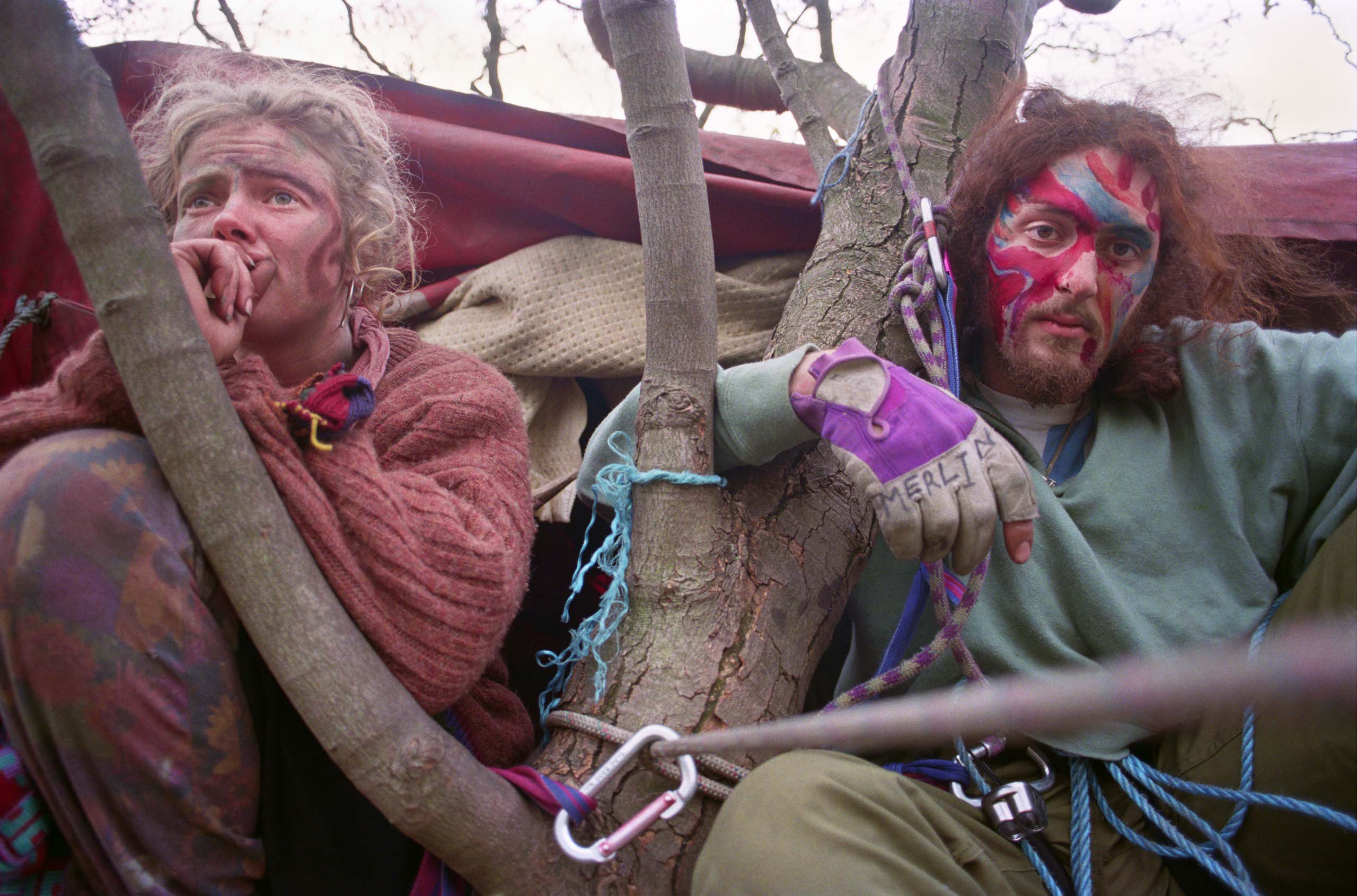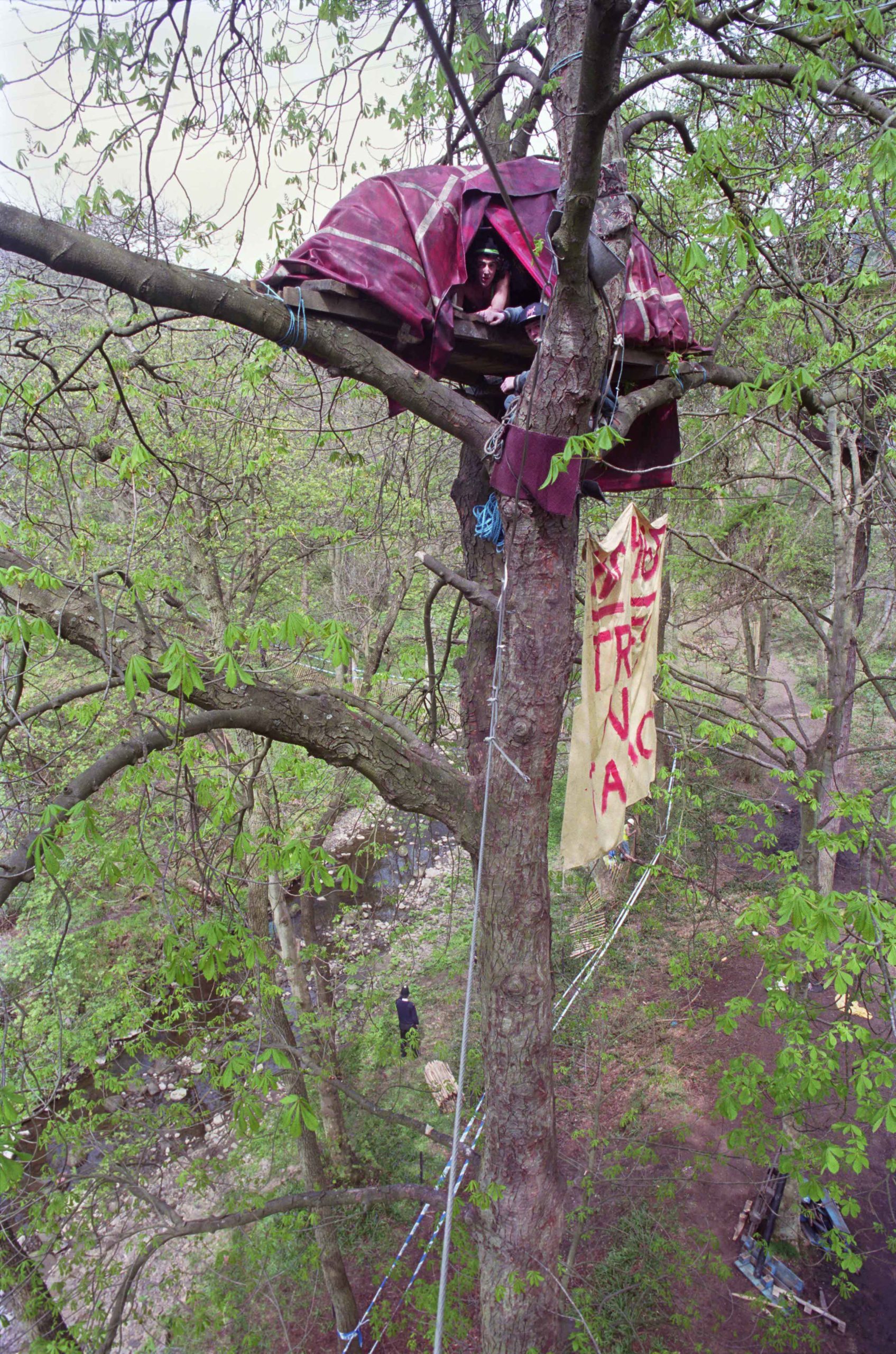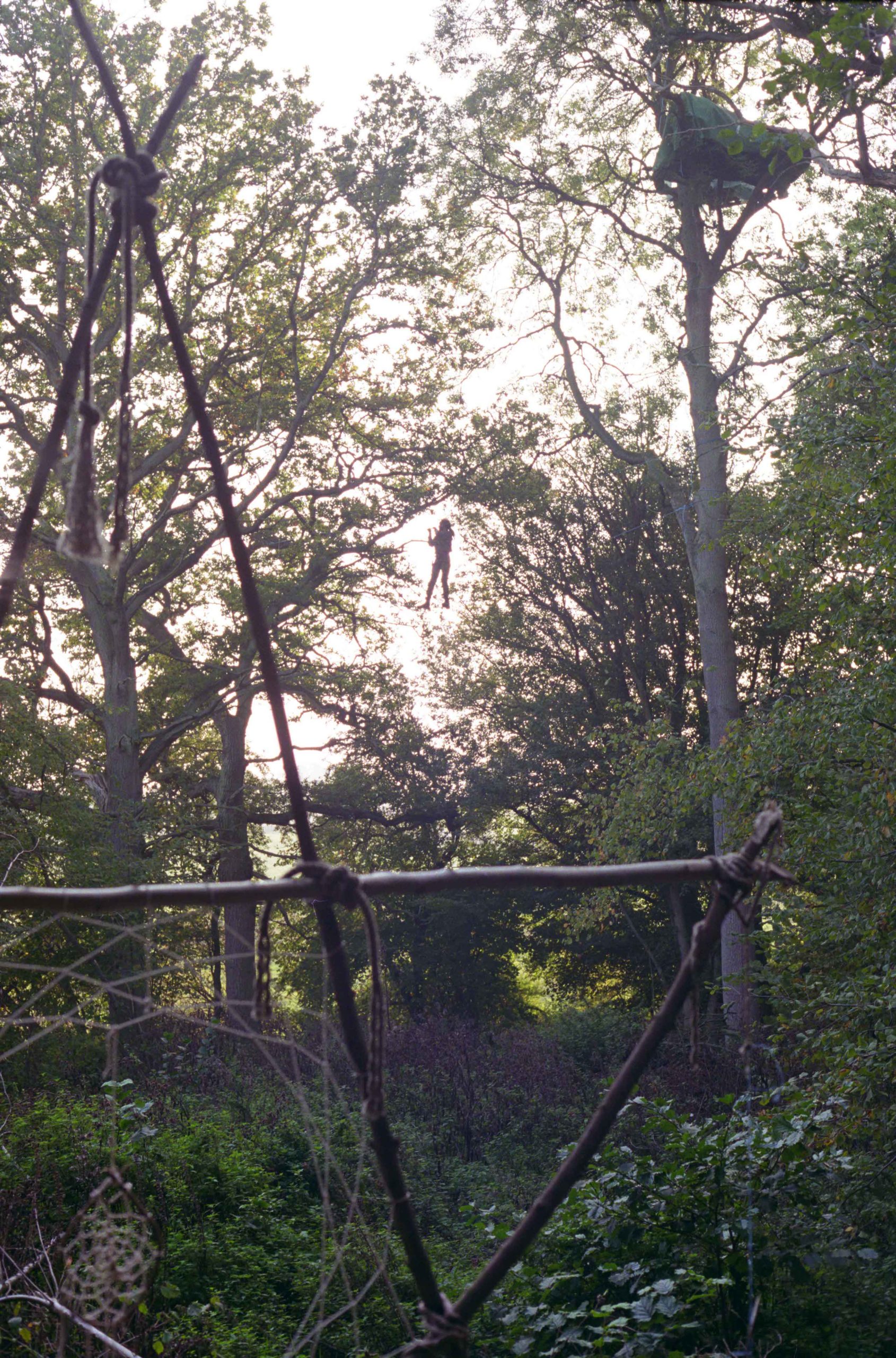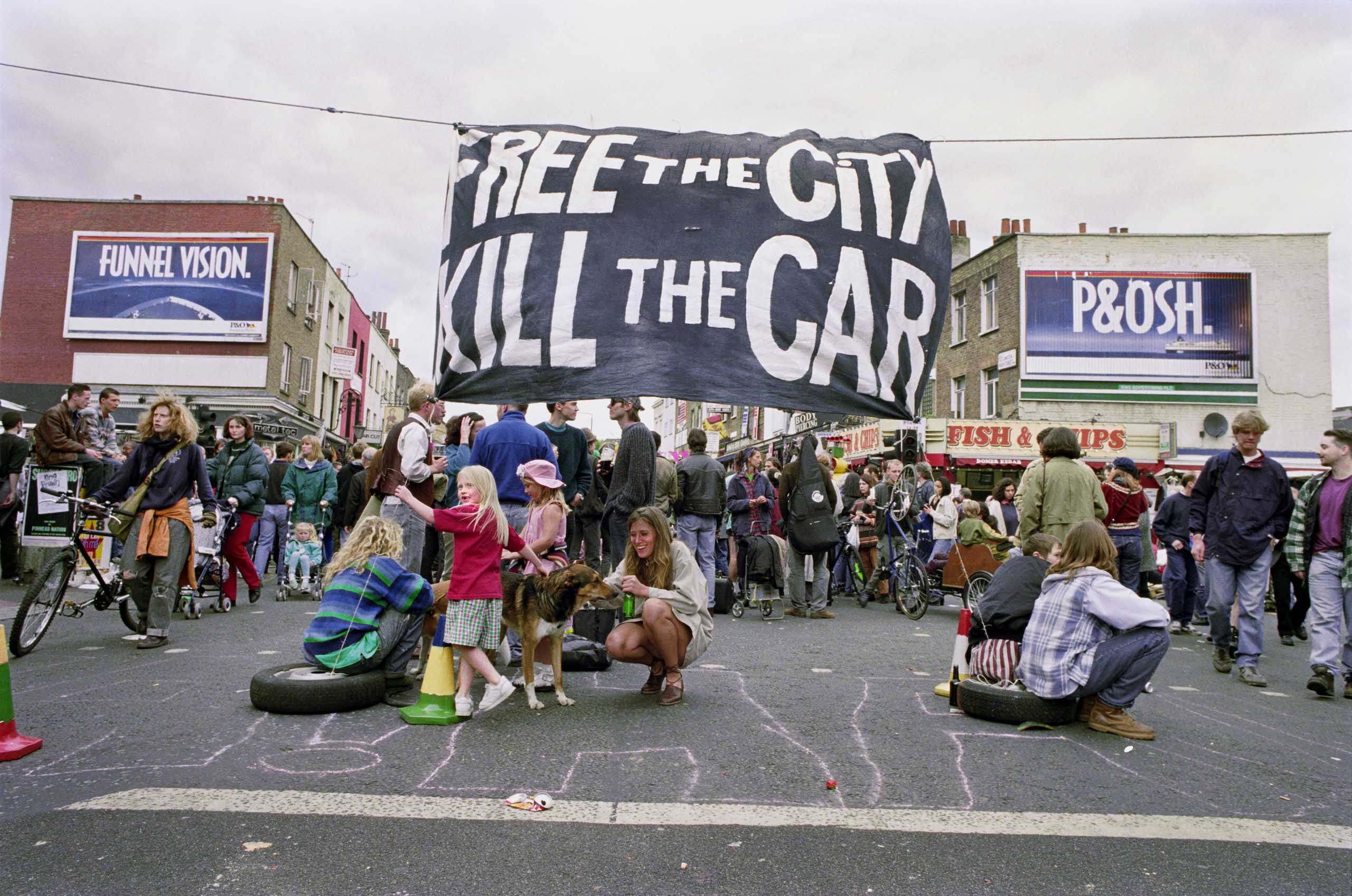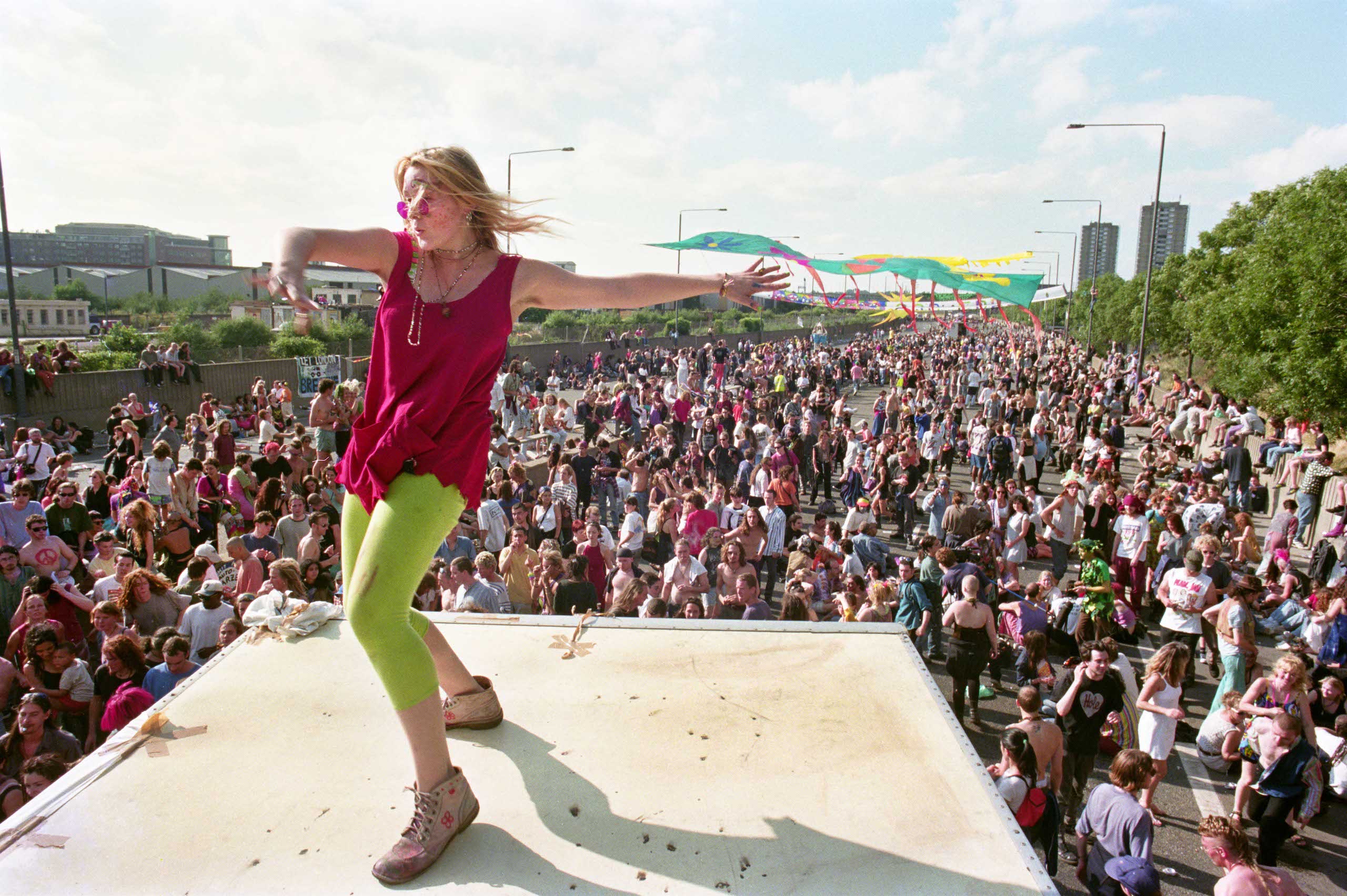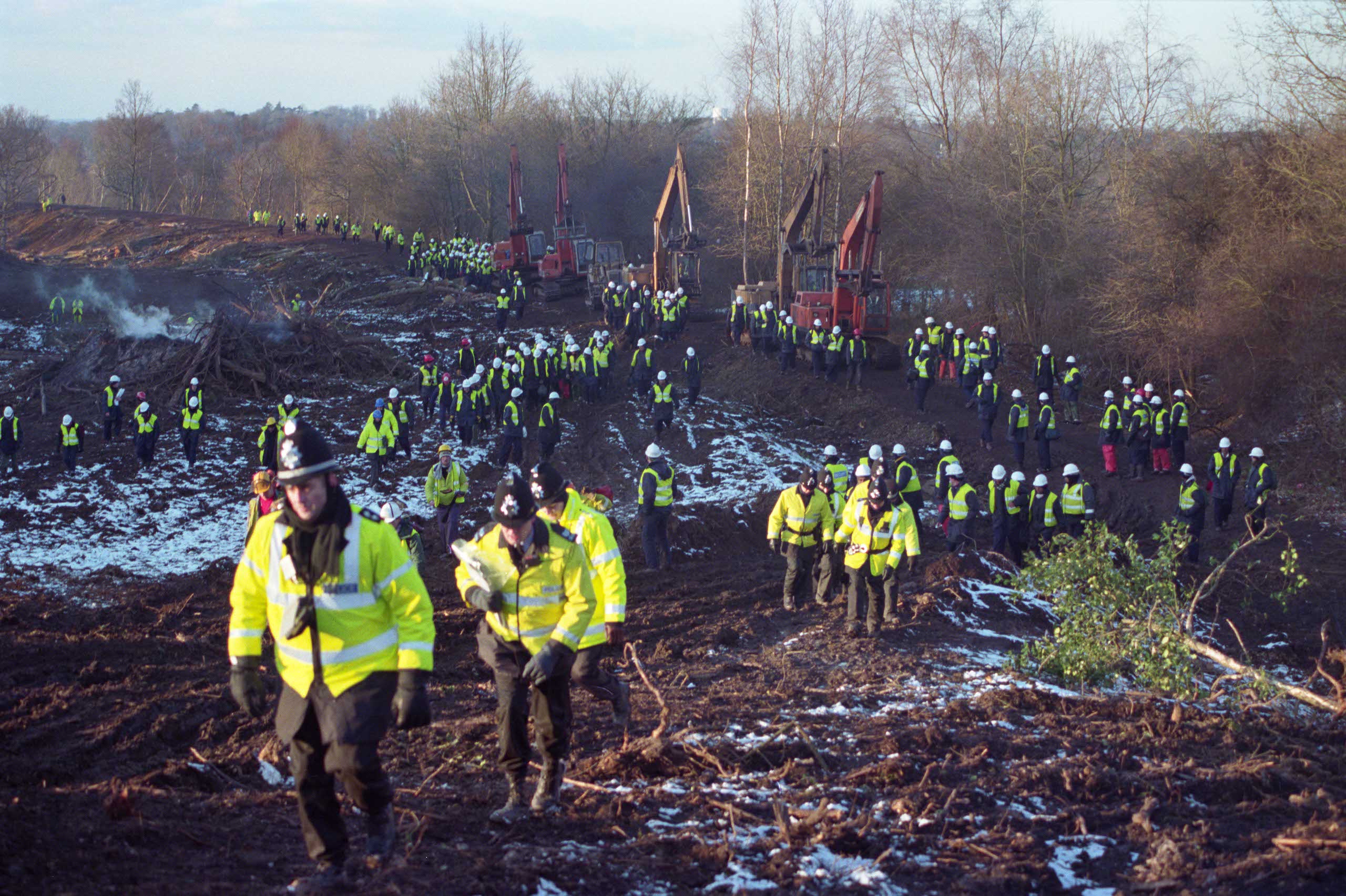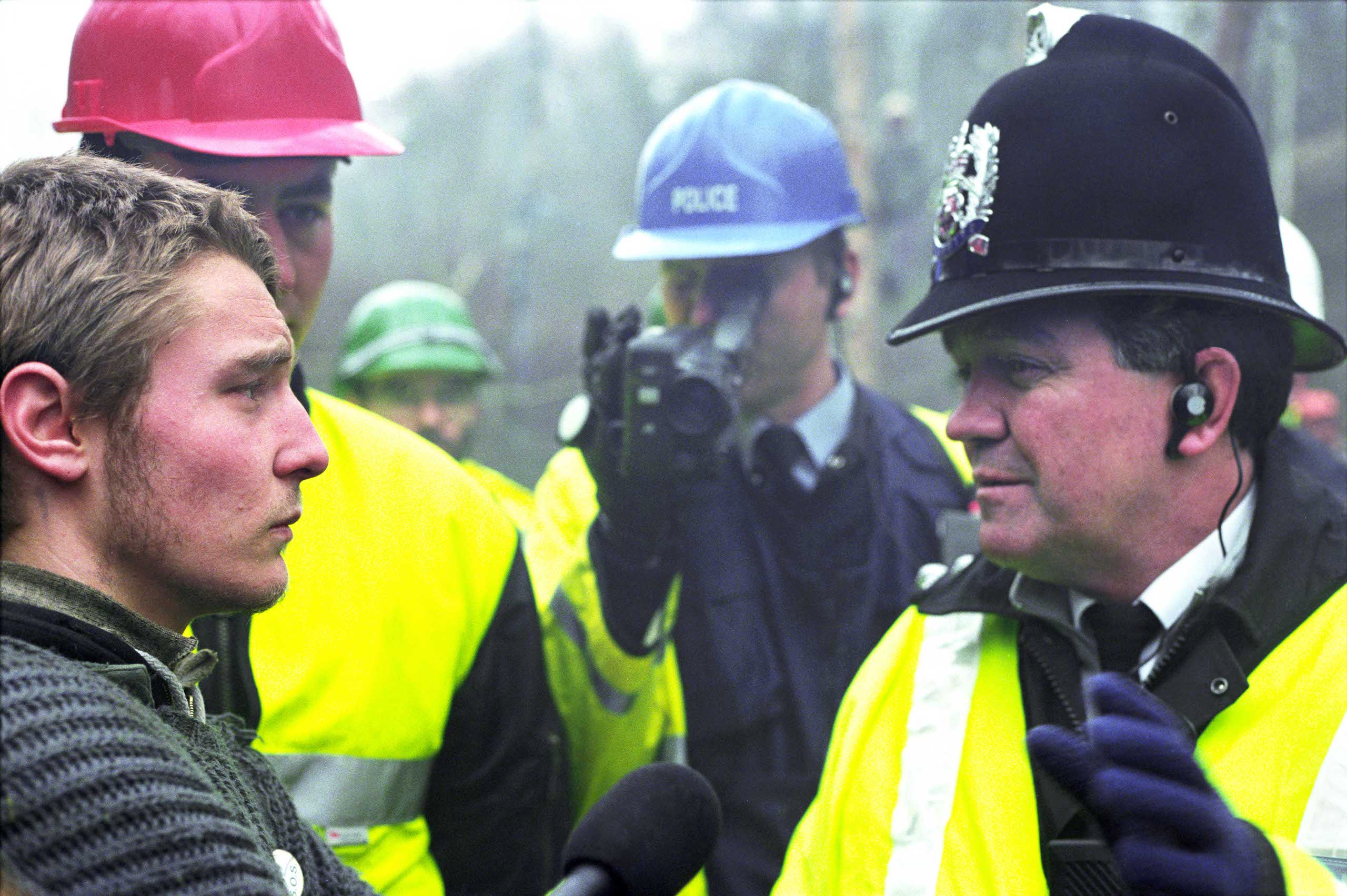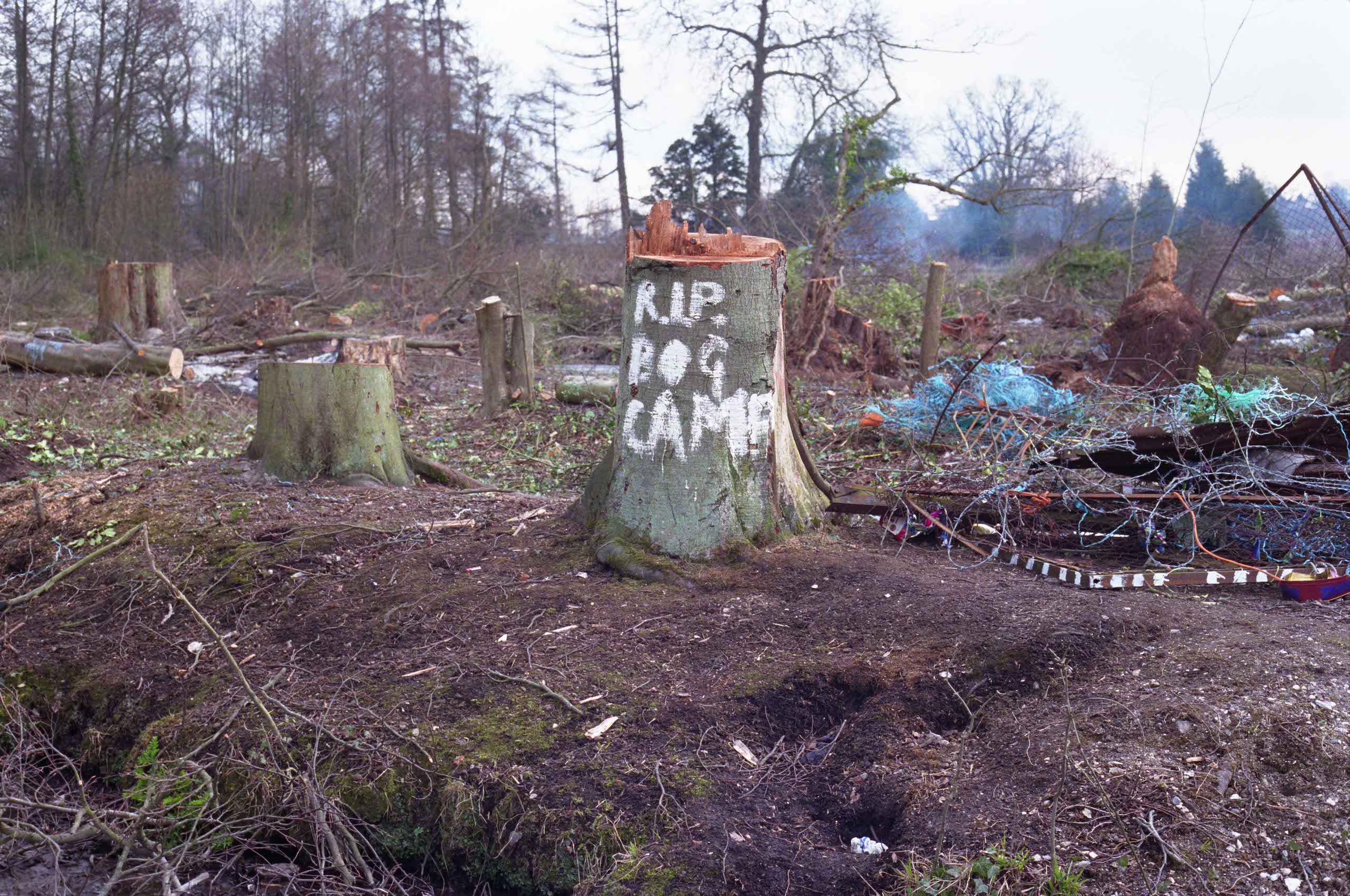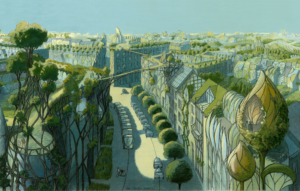In the middle of the 1990s, a wave of protest emerged in response to the UK government’s massive road building plans. From 1992 to 1999, thousands of protesters staged occupations in the streets of London while others lived high up in trees due to be cut down to make way for motorways and bypasses.
Adrian Fisk, who grew up in the wilds of Dartmoor in south-west England, was still at college studying for a photography degree at the time. “I heard about these people living in trees. So at the beginning of ’95 I went down and checked it out.”
Motivated by a love of the natural world and desire to challenge the political status quo, he headed to Newbury – a location that would later become symbolic of the campaign – and embedded himself with the protesters.
“I built a treehouse and lived sixty feet up in an oak,” explains Fisk. “I was very supportive of what they were doing. I was an activist myself. My power, which I quickly came to realise, was in my camera.”
This year, Fisk published the photographs he took during those years in a new book, Until the Last Oak Falls. It tells a moving and personal story of people who endured bitter winters, dizzying heights and ridicule in the media to defend the natural world. It’s one of dedication, disobedience, grief and hope in the face of environmental destruction.
But why now, 27 years on?
For one, he says, the climate and ecological crisis has only deepened in the intervening years. Half of all the CO2 emitted by humans since the industrial revolution began has been released in the last 25 years, he points out.
“All those guys were shouting from the treetops, ‘This is absolutely nuts, what are you doing? We’re on a very dangerous trajectory and we have got to stop,’ but no one listened to them.”
With the recent resurgence of climate activism and direct action in the UK, we have a chance to reflect and learn from history, Fisk says. “Now we have XR [Extinction Rebellion], Fridays for Future and Greta Thunberg. The activists were bang on the money 25 years ago. We didn’t listen then, so listen to them now.”
The decade saw anti-road protests take various forms. As well as occupying trees to prevent the bulldozers and chainsaws from destroying mature oak, ash and beech trees, people swarmed major roads in London as part of the Reclaim the Streets campaign. Rallying against the growing dominance of car culture, they blocked off roads using bamboo tripods or staged car crashes, then held huge street parties.
These protests were hugely popular because they were the “nexus of rave scene and the environmental movement”, explains Fisk.
“People made the connection that the number of cars on the road determined the amount of CO2 that was going into the atmosphere. And that more cars meant more roads, which meant cutting through pristine natural environments.”
As the worsening impacts of climate change and biodiversity loss cause greater disruption to people’s lives, direct action protests, too, have become more disruptive in a desperate attempt to force governments to take bolder policy action.
Last month, two young women walked into London’s National Gallery, opened two tins of tomato soup and threw their contents over Vincent van Gogh’s Sunflowers. The eye-catching act of protest by Just Stop Oil, a campaign demanding an end to new oil and gas extraction in the UK, made headlines worldwide.
The public reaction has been divided, with most of the media coverage missing the point that the women had chosen a painting protected behind glass.
Disruptive protests like these are vital, says Fisk. “Direct action has two roles. One is to physically stop what’s happening. The larger role is to create attention. It’s about shining a light. Otherwise, people are in the dark.”
Until the Last Oak Falls is published by Alucinari Press and available to purchase from The Booqs.
Read more from China Dialogue’s Environmental History Series.
